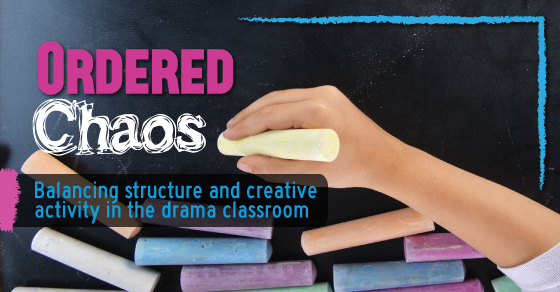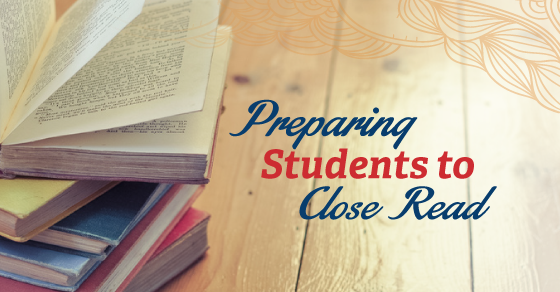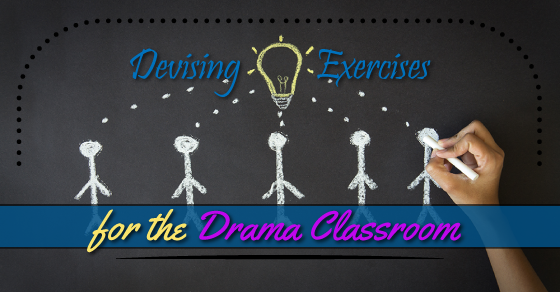Kick Creativity out of the Drama Classroom
“Every child is an artist, the problem is staying an artist when you grow up” – Pablo Picasso
Creativity is a misused, maligned, misunderstood word. Especially in the drama classroom.
Many students come to drama class (or avoid drama class altogether) because of their preconceived notion of creativity. “I can’t do drama, I’m not creative. I can’t act. I can’t write.” They believe creativity is something you’re born with. They believe creativity is a talent possessed by the lucky few.
Students or not, many people believe creativity is something you either have or you don’t. “She is so creative. I could never do what she does.” In this mindset, creativity becomes a wall – there are the haves on one side and the have-nots on the other. When creativity is the focus of the drama classroom, it becomes a place of exclusion rather than inclusion.
Having said this, it’s common to equate what goes on in the drama classroom with creativity. Everyone sees the arts as a “creative” field. In order to put on a play, or sing or dance, creativity has to be involved, right?
This is the stereotype every drama teacher has to deal with. Ask your students to define the word and they’ll equate creativity with the arts, creativity with talent, and creativity as being something they have or don’t have.
And yet, we want students to create and be creative. To be a creative thinker will give students a leg up out in the real world. But not through preconceived notions and stereotypes. We want students to be creative in the truest sense of the word.
The Real Definition
To be creative is to see a situation in a new light. Creativity is doing something new. This definition can be applied to the arts, but you can also be creative in science, in city planning, in how you manage an office. Problem solving is creative.
By this definition, everyone is creative! But it’s one thing to say that everyone can be creative and another to put this concept into action. The stigma surrounding the word is too strong. It’s better to not even use the word with your students.
How do we leave “creativity” out of the drama classroom?
Don’t think. Thinking is the enemy of creativity. It’s self-conscious, and anything self-conscious is lousy. You can’t try to do things. You simply must do things. – Ray Bradbury
Just Do: Become a Child Again
Have you ever had your students pretend to be five years old? What happens? More often than not, they loosen their bodies and their voices. They easily fall into play. They make forts out of blankets, and mountains out of thin air. They instantly become creative.
Kids don’t see what they do and how they think as creative. That word doesn’t exist. Kids problem solve all day long. How can this couch cushion become an airplane? They don’t use their imagination because it’s a talent. They don’t play by the rules of the “real world.” They don’t try to be creative. They simply are creative.
Encourage your students to act like kids. This doesn’t mean nap time or afternoon temper tantrums. Get your students in the habit of seeing their world in a new light. Encourage your students not to over-think a situation, but to simply do.
This means of course, that they’ll fail more often. The more you do something without thinking, the bigger the risk. But that’s what truly creative people do. They risk, they fail, they do it again. This mindset will serve your students out in the world more than any other.
Do this!
- If students have trouble with Shakespeare, approach it as a kid would. How would a five-year-old see Romeo and Juliet?
- Get in the habit of one impossible scene a week. How will your students create a scene that involves Japanese? How will your students create a scene underwater? How will your students create a scene where no one is allowed to use their left arm? The point is not the success of the scene, but to accept the impossible and use it!
- Give objects to your students to use in a scene. The goal? They have to use them in a scene but not in the manner the object is usually used. For example, a chair cannot be sat on. But it can be used as the controls for a space ship.
- Use improv games to practice problem solving:
- The Chair Scene. Someone sits on a Chair. A second person enters. Their job is to get the person on the chair to leave.
- One word Story. Students sit in a group, they have to tell a story, one word at a time so that it makes sense.
- Gibberish Translation. A pair creates a gibberish scene. They each have a translator who, based on what they see and hear, has to translate the Gibberish into English for the audience.
- Object. Students are divided into teams. They are given a time limit and have to come up with as many different uses as possible for that object.
Think of creativity as a muscle, not a talent
The most creative people are actually the most regimented, practical and habitual. That doesn’t sound right, but it’s true. Creative people use their brain like a muscle. They don’t leave creativity to chance or even inspiration. Creativity is not magic, and it’s not talent. Creative people know that they’ll be the most successful when they’re consistent and habitual. To that end, they use their brains on a daily basis. It’s not magical unicorns sliding down a rainbow. Creativity is work.
Think about how you have to use your physical muscles on a daily basis to get them to work properly. If you do too much, your muscles get sore. If you try to push a cold muscle, it’s not going to be cooperative. If you try to push a cold brain, the same thing will occur. This is often misinterpreted as I’m not creative.
To get your students to work on their “creative” muscle, always equate it to working on a physical muscle. If you do too much, too soon, that muscle will resist. If you do a lot one day and then don’t do anything for a week or two, that muscle will forget. Consistent, habitual, small steps are always better than big leaps.
Do this!
- A month before you start a playwriting unit, introduce a writing warm up every class as bell work. Give students a first line prompt and give them five minutes to write a monologue. Five minutes, that’s it. It’s better to work for five minutes every day for a month than it is to write for five hours once a month.
- When you’re working on character development, introduce a habit of observation. Have your students record one physical or vocal observation in their journals at the beginning of each class. How did someone move as they walked down the hall? How did someone sound when they were being sarcastic? In order to play different characters, students have to be aware of different types of people.
- Introduce five warm up games and play them consistently in class for at least a month. Pick them carefully, what do you want students to learn through warm ups? At a certain point (once everyone can play them without thinking), turn the control of leading the warm ups over to the students. And then, once students can both lead and play the games, ask students to change parts of the warm up. Have them come up with an add on. Have them change one of the rules.
- Before you get students on stage, make physical and vocal exercises a habit. Get them in the habit of projection and articulation before they even do their first scene.
“To live a creative life we must first lose the fear of being wrong.” ? Joseph Chilton Pearce
Think of wrong as a choice, not a failure
For so many students, being wrong is traumatic. School sets up students to fear being wrong – if you’re wrong on a test, you could get a low grade and not pass the course. Wrong equals failure and failure is bad. But for the truly creative, if you’re seeing a situation in a new light, or problem solving, wrong is a way of life. No one solves the problem on the first go. Everyone fails. The only way to get to the best possible solution is to fail and get things wrong. Being wrong is a choice.
The drama class is one of the few places where students can learn to accept failure and learn to use failure as a creative tool. They can be wrong! Encourage students to make wrong choices in their scene work, in their character work, in their analysis work. The point being that they can’t just make a wrong choice and stop altogether. They have to move on to the next choice, and the next choice and the next. That is being creative.



